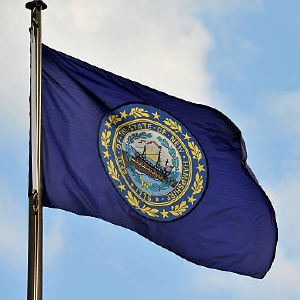Opinion: Asbestos exposure may affect New Hampshire veterans even today
| Published: 03-18-2024 6:00 AM |
Cristina Johnson is a Navy veteran advocate for Asbestos Ships Organization.
Over the last century, asbestos use was prevalent in the U.S. military, as WWII demanded low-priced materials for producing large quantities of military equipment. Asbestos abounded in the markets, and manufacturers wanted to take advantage of its versatility and low price. Nobody considered the health risks of incorporating asbestos in products made to insulate military property like aircraft, vehicles, sleeping barracks, mess halls, ships, and shipyards. Consequently, military personnel were, unbeknownst to them, at risk of asbestos exposure whenever fulfilling duty on land, sea, or air.
The increasing number of toxic exposure cases among veterans today reflects the many health dangers they faced during service, among them asbestos exposure. The consequences of having been affected by the hazardous asbestos fibers may hide behind many veterans’ fragile health now as they enter a stage of life when keeping good health might be challenging, including those among Concord’s veteran population.
The city’s military history is marked by citizens who have served with distinction in the armed forces, whether in the Navy or Army. “The Lumber Jills of Turkey Pond ” has made a unique contribution to the city’s military past by performing yeoman service and running a World War II sawmill. The state’s WWII history encompasses the New Hampshire National Guard, whose troops served with distinction at varied locations in overseas deployments and stateside. New Hampshire’s military history continues today through the Portsmouth Shipyard Navy Base, a U.S. Navy installation and building site of the first Navy submarines.
Ships needed insulation to face battles out on the oceans. Hence, the Navy applied the most asbestos, putting personnel at an outstandingly high risk of asbestos exposure. However, this doesn’t exclude other military bases from being a potential source of asbestos contamination. Navy veterans worked and lived near asbestos materials onboard naval vessels built before the 1980s, mostly unaware of the danger they represented. It’s the cause why a considerable number of them developed asbestos-related diseases decades later. Asbestos fibers are microscopic and can float in the air for hours due to their structure.
Because the tiny threads are easily inhaled or ingested, asbestos dust is one of the most toxic substances in military bases or shipyards. Once inside the body, the sharp asbestos fibers cause permanent damage primarily to the lungs and lead to devastating diseases. One of the most terrible aspects of asbestos-related illnesses is the decades-long latency period between exposure and the first symptoms. Even if veterans may have had no health issues during their service, they’ll learn the effects of asbestos exposure only over time when they are diagnosed with illnesses like asbestosis, mesothelioma, lung cancer, or other severe respiratory diseases.
Although decades have passed since the Navy overly used asbestos, veterans who were in contact with it during their service now have to fight for their health. Many must come to terms with the reality that their asbestos illness will shorten their life. With New Hampshire ranking 14th in the U.S. for asbestosis deaths, veterans should make an appointment with their doctor as soon as possible. Timely detection considerably improves treatment results and prolongs life expectancy, so they should proactively protect their health through:
■Regular medical examinations: Health check-ups and openly discussing military service and possible asbestos exposure are crucial. The inhaled fibers injure the lungs first, so veterans should request chest X-rays, CT scans, and pulmonary function tests. These can reveal any damage caused by the asbestos fibers and are a reliable diagnostic procedure for benign and malignant asbestos-related diseases.
Article continues after...
Yesterday's Most Read Articles
■Learning about legal rights: Veterans who know they’ve worked in a contaminated environment while serving or those who suspect they’ve been exposed to asbestos should know their rights and options. Legal avenues and compensation programs are available to help vets harmed by asbestos exposure through asbestos trust funds and VA disability benefits.
■Promoting awareness: Veterans can play a central role in educating and raising awareness by sharing their knowledge and experiences about asbestos exposure. By being open, they can make sure that others who protected our nation are informed.
Besides expressing our gratitude to veterans, we also have a responsibility to help protect their well-being. Awareness of asbestos exposure is an essential part of this responsibility. By informing about this still lurking danger, we can ensure that those who served receive the care and support they rightly deserve.


 Opinion: The truth of it
Opinion: The truth of it Opinion: Public school standards overhaul will impact every facet of public education in NH
Opinion: Public school standards overhaul will impact every facet of public education in NH Opinion: A bad idea for New Hampshire
Opinion: A bad idea for New Hampshire Opinion: Medical Aid in Dying would have spared my father’s suffering
Opinion: Medical Aid in Dying would have spared my father’s suffering
